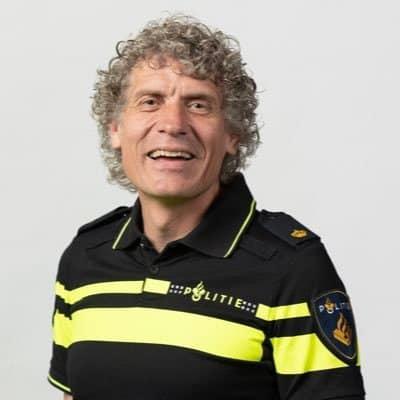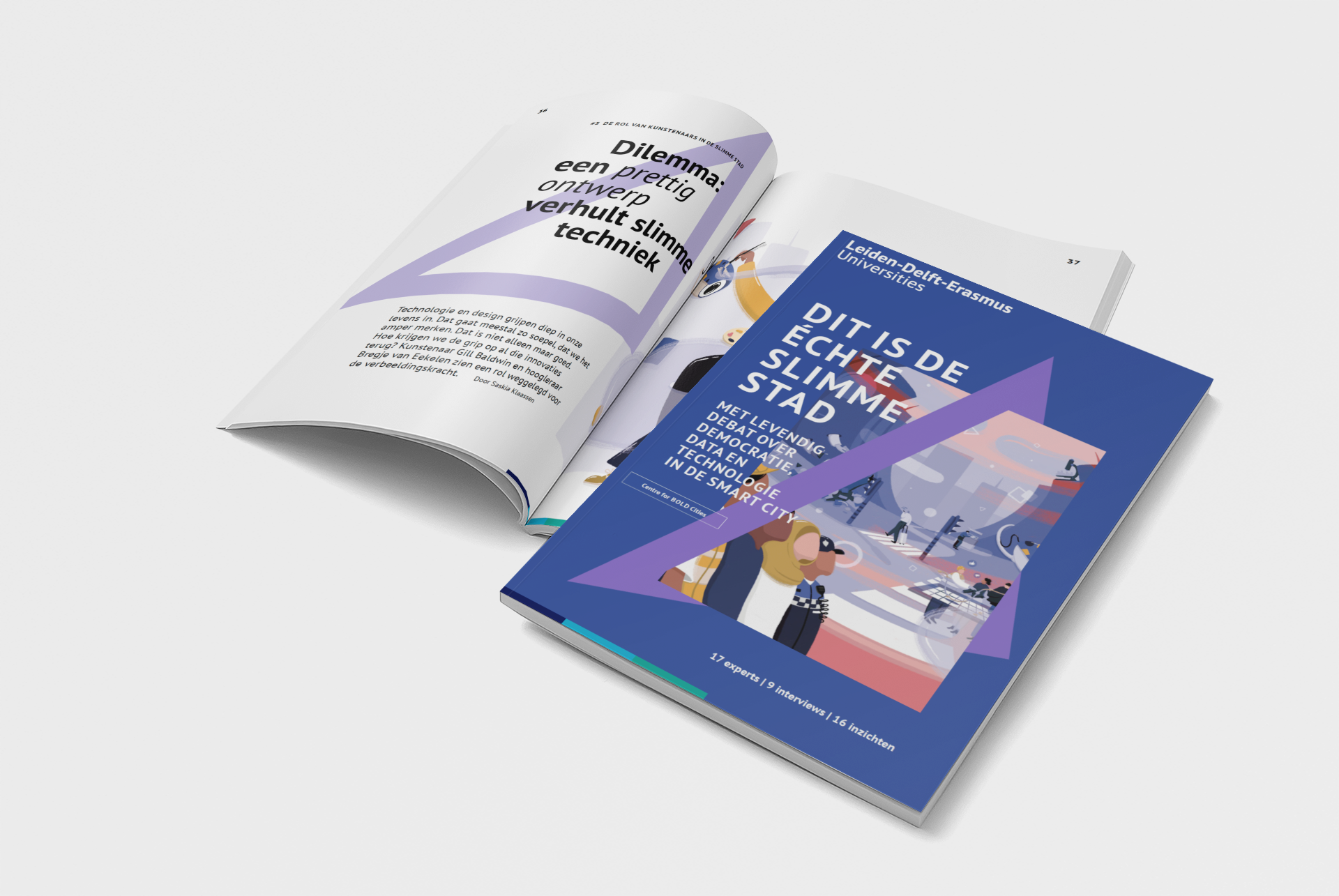Last June, we published a White Paper titled: 'This is the real smart city', (Dit is de echte slimme stad) in which scientists and practical experts discuss smart cities, citizen participation and governance related themes in duo interviews. In the coming months, these interviews will be published separately, on both the Leiden-Delft-Erasmus website (in English and Dutch) and on our own website (in English only).
This month: former neighbourhood police officer Wilco Berenschot (Politie Nederland and sociologist Freek de Haan (Erasmus School of Social and Behavioural Sciences (ESSB)) talk about experiences, promises and risks of upcoming security technologies such as WhatsApp neighbourhood prevention groups and doorbell cameras.
Connecting or alienating? Do's and don'ts on WhatsApp neighbourhood prevention and doorbell cameras
WhatsApp neighbourhood prevention groups and doorbell cameras can potentially connect citizens and officials. Former neighbourhood police officer Wilco Berenschot and sociologist Freek de Haan talk about experiences, promises and risks of this kind of security technology. By Meike Schipper

Resident participation through WhatsApp: both safer and more dangerous
During the time Wilco Berenschot was a neighbourhood policeman in Rotterdam-West, someone was murdered in his neighbourhood. 'I asked my colleagues if I could share the neighbourhood investigation digitally via WhatsApp, after which I found two witnesses within five minutes.' WhatsApp neighbourhood prevention groups are an example of technology that contributes to low-threshold contact between neighbourhood police officers and residents. 'I have gained a lot from it because it brings things full circle at all sorts of times,' says Berenschot.
WhatsApp neighbourhood prevention
In the Netherlands, residents engage in more than 10,000 WhatsApp groups to keep their neighbourhood safe. Sometimes at the initiative of a neighbourhood police officer, sometimes on their own initiative. Participants share information on neighbourhood safety, observations and sometimes photos or videos of suspicious situations, which they shoot with their smartphone or doorbell camera, for example.
So for a neighbourhood police officer it can be a valuable tool, but on the other hand, do not overestimate its importance. ‘When a police officer is part of an app group, it doesn’t replace real contact with residents,’ Berenschot says. He is known for his creative ways of making contact with neighbourhood residents, to work with them on improving safety. ‘It really starts with making contact.’
WhatsApp neighbourhood prevention groups can both improve and reduce residents’ feeling of safety, says Freek de Haan, associate professor at Erasmus University Rotterdam. ‘If a group is very focused on threatening matters, you also run the risk of creating a bubble in which people might get the impression that their neighbourhood is the most dangerous place on earth. Yet, the group may also have a more social function,’ De Haan says.
The presence of moderators, the police or enforcers in such an app group has an influence on the kind of conversations people have there. De Haan: ‘When moderation is absent, photos might be shared, for instance, of matters that cause more fear than is necessary, and that stigmatise specific groups of people.’ For this reason, Berenschot always immediately makes clear the rules. ‘When somebody is wanted by the police, you may share a photo, but it must be deleted immediately afterwards.’

Innocent doorbell or camera surveillance?
The video images shared in the WhatsApp neighbourhood prevention groups are often made with doorbell cameras. 'Camera doorbells have really boomed in recent years,' says De Haan. Images with recognisable people cannot legally be shared, but residents do not always let that stop them. De Haan gives an example of a WhatsApp group with an overzealous moderator. 'He’d come up with the idea to link all those cameras of neighbourhood residents also to him. So that he could watch everything on one screen, as a kind of Big Brother in the neighbourhood. Of course, there’re all sorts of legal, social and ethical issues attached to that.’
Camera doorbells
Camera doorbells are meant to enable you to see who is at the door, even if you are not at home yourself. With a camera, you are allowed to film your own premises and possessions, for example a car, even if it is parked on the public road. The police make good use of this through the Camera in View database, which allows people to voluntarily register their cameras. If something happens, the police can then easily retrieve the images afterwards.
As a neighbourhood policeman, Berenschot did see opportunities in security cameras and camera doorbells. 'I used to patrol the squares in my neighbourhood. And then I thought: why couldn't I do a digital surveillance? I asked residents around the square whether I could install a camera from their house, and it worked. Every now and then I’d spend fifteen minutes looking at the camera footage on my tablet, just as I’d normally go on surveillance.'
Berenschot is well aware that he is pushing the boundaries of the law in doing so, but the method is proving effective. 'As a police officer, if something was going on in the neighbourhood, I could request camera surveillance for up to fourteen days. But if that camera’s visible in the square, of course nothing happens. I then look for the balance between technological possibilities on the one hand and legislation, which is always a bit behind, on the other.'
All enforcers share one online notebook: Spitter
De Haan sees that some technological applications create a distance between citizens and officials. He studied security applications used by officials, including the Spitter app, a digital patrol assistant for enforcers. 'That way, as an enforcer, you don't have to start completely from scratch,' says De Haan.
Spitter
Spitter is similar to a paper notebook, but enforcers also have insight into each other's observations. These are stored in an archive, with location tags but without personal data. The app has been in use by youth enforcement officers in the municipality of Rotterdam since 2017.
However, the notes of fellow enforcers can make it tempting to stop starting conversations with citizens. De Haan: 'Suppose a colleague of yours describes someone in Spitter as a very difficult person. On the one hand, you can use that information to start the conversation. But this insider information can also give you a bias, preventing you from opening up the conversation. Starting from scratch can also be positive, as you give people the benefit of the doubt.'
‘You need to think digitally, but act analogue’
Technology brings together the world of data and the living world of people in the neighbourhood. In practice, however, these worlds are often far apart. 'As a police officer, you always have to make a translational adjustment,' Berenschot argues. 'There has to be a good balance between the two worlds. I understand the advantages of digitalisation, but to be physically present in the neighbourhood and make contact, that remains important.' De Haan agrees. 'To sit at the table together and look each other in the eye, that's the best way to put data in perspective and contextualise it.'
Both Berenschot and De Haan are cautiously hopeful about the future of security technology. 'You have to think digitally, but act analogue,' says Berenschot. According to him, you can put technology to good use, for example to organise information, but real problems are ultimately solved through human contact with residents.
A social and political debate about security technology is very important, according to De Haan. 'Technology is often presented as politically neutral, yet it consists mostly of the concrete products of technocrats. Administrators and technologists shouldn’t just explain in a kind of paternalistic way what we do with technology, but should actually look at technology in collaboration with people and question it critically as well.'
Wilco Berenschot is National Operational Expert with the National Police and former neighbourhood police officer in Rotterdam-West. He is known for his creative initiatives, such as Agent Bijt Hond (Cop Bites Dog), the mobile neighbourhood table and the pop-up police station, with which he seeks to connect with neighbourhood residents.
Freek de Haan is associate professor of sociology at Erasmus University Rotterdam and a researcher affiliated with the Centre for BOLD Cities. He is interested in urban policy and political economy and has conducted research on privacy and security in smart cities, among other topics.
De white paper 'Dit is de échte slimme stad.' is op 22 juni 2023 gepresenteerd tijdens de conferentie Op (weg) naar de echte slimme stad in Den Haag. De White Paper is hieronder te lezen of kan als Pdf worden gedownload. Liever als papierenuitgave lezen? Bestellen kan via deze link en dan sturen wij u een gratis exemplaar op.

